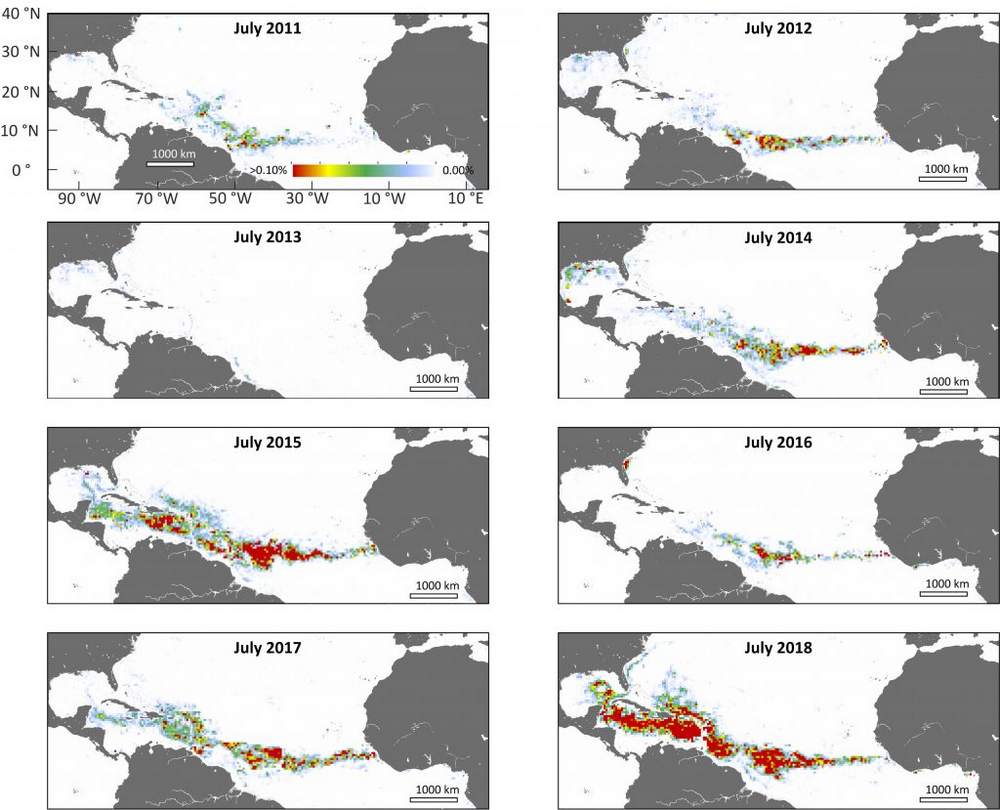Researchers have found the largest seaweed bloom yet sighted along the coast of the Atlantic Ocean. It stretches across 8,850 kilometers (5,500 miles) and is estimated to weigh 18 billion kilograms. Currently, it stretches from West Africa to the Gulf of Mexico.
They have named the stretch the Great Atlantic Sargassum Belt (GASB). Sargassumis a brown macroalgae or seaweed that grows in tropical oceans.
The algae receives its nutrients from the Amazon river in the spring and summer, and from West Africa in the winter.

Sargassum on Delray Beach in South Florida in May 2019. Image Credit: Brian Cousin, Florida Atlantic University’s Harbor Branch Oceanographic Institute
The river is discharging an increased amount of nutrients into the ocean due to fertilisers and deforestation. Winds push the water on the surface of the African coast away; the cold water from below comes up to replace the water that was blown away. While it rises to the surface, the cold water brings along nutrients from the deep oceans to the surface, which helps the algae flourish.
Dr Chuanmin Hu of the University of South Florida and main author of this studysaid that their hypothesis is based on limited field and environment data. He said. ‘We need more research to confirm this hypothesis.”
What he can say for sure is that these blooms are not going away anytime soon, they might even increase. The researchers used NASA’s Moderate Resolution Imaging Spectroradiometer (MODIS) from 2000-2018. From 2011, they saw these patches increase in size. The amount of seaweed rose to such an extent that Barbados declared a national emergency because of its effect on tourism.

NASA’s satellite data (MODIS) confirms that the record-breaking seaweed belt forms in the summer months (northern hemisphere). 2015 and 2018 saw the biggest of the massive blooms that started in 2011. Image Credit: USF College of Marine Science
Other than causing problems for tourism, this algae does have some redeeming points. It provides a habitat for ocean animals like turtles, crabs, fish and it produces oxygen like other plants.
Anything in excess can be bad. It can make it hard for ocean life to move and breathe when it covers the surface. When it dies and sinks to the bottom, it suffocates the corals and sea grasses. Rotten algae also releases hydrogen sulphide gas that smells like rotten eggs, which is certainly harmful to the tourism industry.
The findings of this study have been published in the journal Science.
As we follow the planned launch of India’s second mission to the Moon, Chandrayaan-2 on 15 July, you can find our entire collection of stories, in-depth analysis, live updates, videos & more on our dedicated #Chandrayaan2TheMoondomain.


